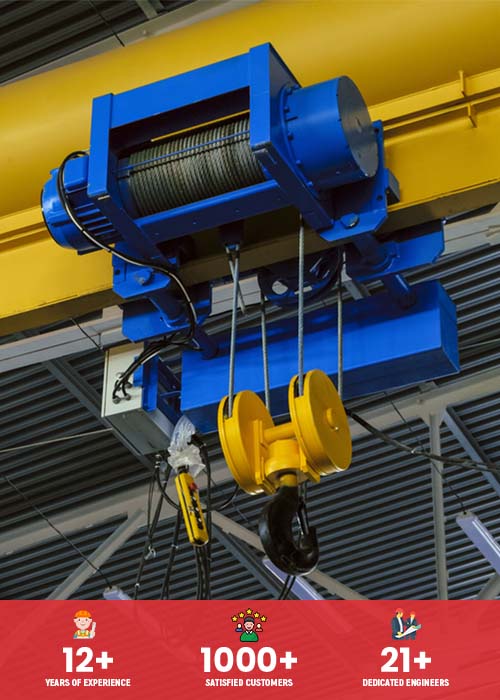Specifications of overhead cranes
Cranes are among the most frequent machinery found in both large and small businesses. The crane’s main aim is to make physical labour easier by lifting huge weights with the aid of mechanical arms. A crane operator has been assigned the task of driving and operating the crane, as he is an expert and has expertise with crane operations. Cranes are almost always present on building sites since they are incredibly useful and effective in easing the labour. Gantry crane manufacturers in India, make cranes in a variety of shapes and sizes, and each one is employed to meet the needs of a certain industry.
Overhead cranes as discussed above come very handy to the material handling industries and there are different specifications based on which they operate. In this article, we will be seeing some important specifications of overhead cranes which everybody must know
Overhead Crane Capacity
Load is an important criterion to assess the crane’s operating ability since it relates to the crane’s ability to lift a weight, which should include the quality of the sling and iron pole or container. EOT Crane manufacturers commonly refer to it as the rated weight and is denoted by the letter “Q.” The weight – beginning unit was formerly designated as “t,” but is now designated as “kN.” The weight of the crane fluctuates as the operating range of the crane changes. As a result, the rated weight includes the maximum weight as well as the maximum lifting weight.
Working Class
The horizontal distance between a crane’s central axis and the centre line of a hook under the rated weight is referred to as the working range. The radius of gyration or the radius of work are two terms used to describe it. The symbol for it is “R,” and the unit is “m.” The working range is the crane’s working range while it is not shifting.
Lifting Torque
The lifting moment is calculated by multiplying the crane’s lifting weight by its amplitude. The t*m unit of lifting torque was previously used. It is now written as kN*m. It is a crane’s total lifting capacity characteristic that can correctly and thoroughly depict the crane’s lifting capacity. Because the tower crane must operate over a wide range, the model’s key parameter is the lifting torque. The lifting torque of a tower crane generally refers to the greatest amplitude lifting moment.
Crane Lifting Height
The lifting height is the distance from the ground to the hook and the centre of the hook, and the rated lifting height is the calibration value of its parameters. From the centre of the hook to the ground, the rated lifting height refers to the rise of the hook to the maximum limit of the complete weight. The lower depth of the ground below the earth is termed the lower depth when the hook has to be hoisted below the ground, and the total lifting height is the sum of the lifting height and the lower depth.
Crane Working Speed
The crane’s operating speed comprises lifting, amplitude altering, turning, and walking speeds. The unit for the rise and rise speed of the lifting speed is “m/min,” which refers to the rising or lowering speed of the lifting hook. The crane’s lifting speed is tied to the hoisting mechanism’s lifting speed, which is related to the hook pulley group’s ratio. The single rope is twice as quick as the double rope; the rope is twice as fast as the rope. In general, the lifting speed parameter should be specified, as well as the number of ropes.




